Hibiscus is a popular tropical flowering plant available in various colors and varieties. They live for years if provided with proper care. But, will they come back every year? Let’s find out.
If grown in their native zones, Hibiscus plants will come back every year. However, it depends on the variety because Hardy Hibiscus does come back. But, Tropical variety doesn’t come back in most cases. But, if taken proper care of, Tropical Hibiscus can also be grown as perennials.
Today, this article will clear your doubts regarding the coming back of Hibiscus plants and how to encourage them to grow back year after year.
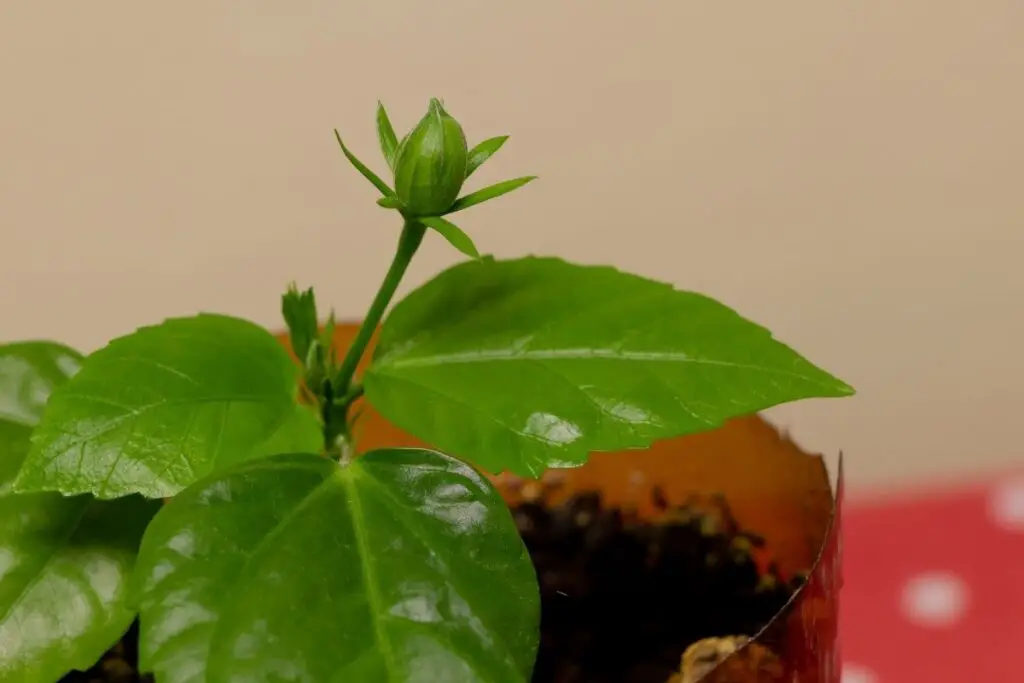
Are Hibiscus annuals or perennials?
There is great confusion about whether the Hibiscus plants are annuals or perennials.
In general, Hibiscus has two varieties – Tropical and Hardy.
Both the varieties are considered perennials.
But the Hardy Hibiscus varieties are the true perennials.
Tropical Hibiscus plants, on the other hand, are grown as annuals in some situations because they don’t come back.
Hardy Hibiscus plants are native to zones 4 to 8.
They can endure cold and come back year after year.
That is why this variety is considered a true perennial.
But, if you belong to a colder zone, Tropical Hibiscus varieties will not survive the winter months.
They will die and won’t come back the next year. So, they are grown as annuals.
Also read: How Fast Do Hibiscus Plants Grow? (Hibiscus Growth Rate )
How long do Hibiscus blooms last?
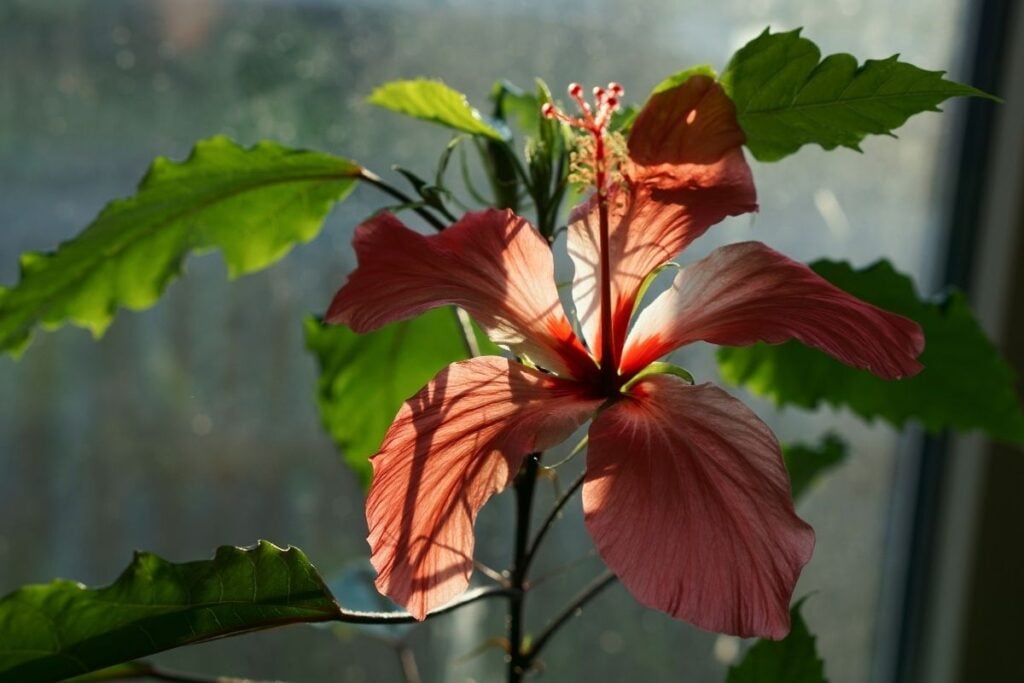
In their native land, Hibiscus plants grow in warm temperatures, sunny weather, and marshy soils.
In the winters, they die back and come back the following year with a flush of colors.
Hibiscus grows multiple flowers, but the blooming cycle depends on the variety and the warmth they are getting.
Tropical Hibiscus blooms last for only one day.
The flower bud develops into a full-grown flower by the daytime and starts wilting in the evening.
The next day, it falls off. Again another flower bud grows after some days.
The blooming cycle of Tropical Hibiscus is year-round, provided they receive their ideal conditions throughout the year.
The flowers of Hardy Hibiscus varieties are created to last a little longer.
But, they don’t stay for more than 2-3 days.
The blooming cycle of this variety lasts only up to summer.
Once the temperature cools down and the sunlight hour decreases, the plant will stop having any flowers.
Both the varieties will continue flowering if the temperature remains between 60 and 75°F.
Also read: When Do Hibiscus Bloom? (+How Long Does A Hibiscus Bloom Last)
Does Hibiscus come back every year?
As mentioned earlier, there are two types of Hibiscus varieties:
- Tropical
- Hardy or perennial
The Hardy Hibiscus varieties are the true perennial Hibiscus because they come back every year.
It is because this variety can tolerate frosty weather.
Though the Hardy varieties die to the ground in winters, they will come back when the weather warms up in the spring.
Some perennials will even endure temperatures close to -30°F.
On the other hand, Tropical Hibiscus plants will only come back if they receive warm temperatures the whole year and mild cold in the winters.
Otherwise, they will die in winter and won’t come back again.
Tropical Hibiscus varieties are native to zones 9 to 12.
They thrive best indoors in containers due to their sensitivity to winter cold.
If you wish to grow Tropical varieties outdoors, make sure your zone is the warm zone.
Otherwise, grow them as annuals and replant them every year.
All Hardy Hibiscus varieties will come back, no matter their growing zones.
Of course, they require some protection during the freezing winters, like mulching and getting covered with frost cloth.
Many people don’t like to grow Hibiscus in containers because pots can restrain the growth of the roots, which further stresses the plant.
But, Hibiscus can grow well both on grounds and in containers and will have the same comeback results.
Also read: Can Hibiscus Tolerate Cold Weather? (+Winter Care)
When is the best time to plant Hibiscus?
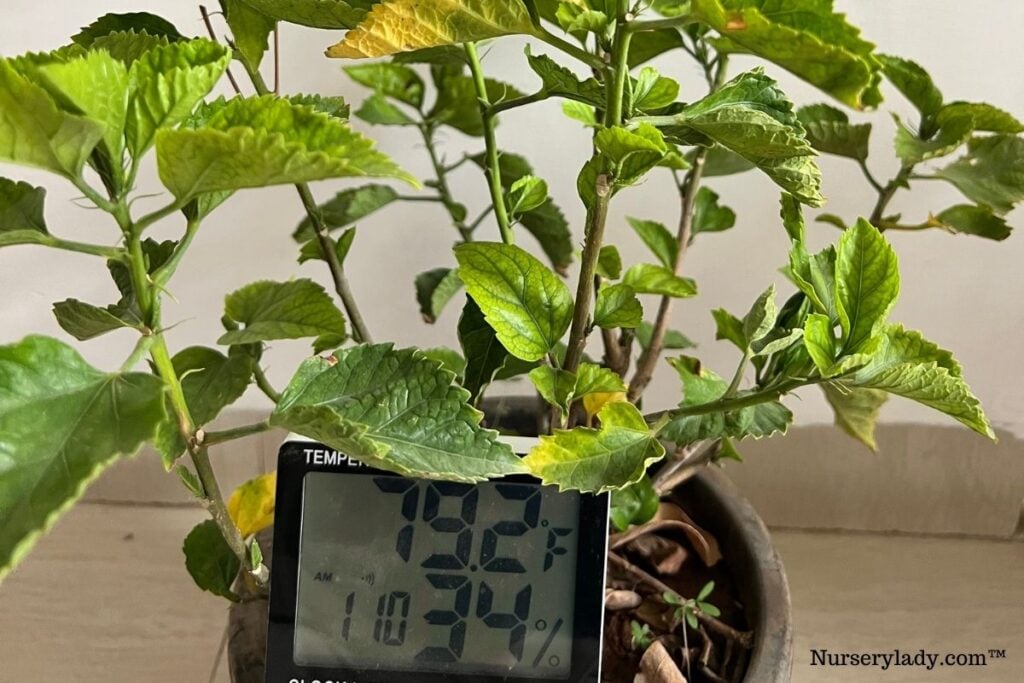
Hardy Hibiscus varieties are planted in spring or fall when there is no risk of frost.
As it is the growing season, you will witness good development and blooming.
Tropical Hibiscus can be planted in the late spring or early summer.
Hibiscus needs a warm temperature ranging between 60 and 75°F. 65°F is the best temperature range for growing and blooming.
Also read: Hibiscus Temperature Tolerance: Ideal Range+USDA Zones
Looking for gardening supplies? We have tested 100's of products before recommending them to you guys. Check out our best pick below:
| Image | Gardening Supplies | Best Price? |
|---|---|---|
 Top
Top Top
Top | Raised Garden Bed Kit | Check On Amazon |
 | XLUX Soil Moisture Meter, Plant Water Monitor, Soil Hygrometer Sensor for Gardening, Farming, Indoor and Outdoor Plants, No Batteries Required | No Results |
 Top
Top Top
Top | 82 Pcs Garden Tools Set and Extra Succulent Tools Set | Check On Amazon |
 | Joeys Garden Expandable Garden Hose with 8 Function Hose Nozzle, Lightweight Anti-Kink Flexible Garden Hoses, Extra Strength Fabric with Double Latex Core, (50 FT, Black) | No Results |
 Top
Top Top
Top | Dual Chamber Compost Tumbler | Check On Amazon |
 Top
Top Top
Top | Sunnyglade Plant Stakes | Check On Amazon |
 Top
Top Top
Top | Organic Cold Pressed Neem Seed Oil | Check On Amazon |
 Top
Top Top
Top | Mighty Mint Gallon :-Insect and Pest Control Peppermint Oil | Check On Amazon |
 Top
Top Top
Top | Scotts DiseaseEx Lawn Fungicide | Check On Amazon |
 Top
Top Top
Top | Jacks Classic 20-20-20 All Purpose Fertilizer | Check On Amazon |
 Top
Top Top
Top | 30,000 Seeds Pollinator Attracting Wildflower Mixture | Check On Amazon |
 Top
Top Top
Top | Survival Vegetable Seeds Garden Kit-Over 16,000 Seeds | Check On Amazon |
Which varieties will come back every year?
As I mentioned earlier, only the Hardy Hibiscus will return every year.
Tropical varieties will also come back, provided they are grown in their native land.
If you wish your Hibiscus to be back, grow the Hardy Hibiscus plants.
They are best for colder climates.
They will also return if you grow them in warmer climates.
Some hardy varieties are:
- Lady Baltimore: It is 4 to 5 feet tall and 3 feet wide. The flowers are light pink with a dark pink center.
- Robert Fleming: This variety measures 2 to 3 feet in height and width. Its flowers are big with deep, velvety red color.
- Summerific Perfect Storm: This variety is a compact, well-branched plant. It measures 5 feet in height and width and has dark purple leaves. The flowers measure 7 inches, colored in whitish pink with red eyes.
Why doesn’t Hibiscus come back despite grown as perennials?
Sometimes, Hibiscus will have new growth after the temperature warms up, but there won’t be any blooms.
There could be several reasons behind it.
Let’s learn some of them:
Unfavorable conditions
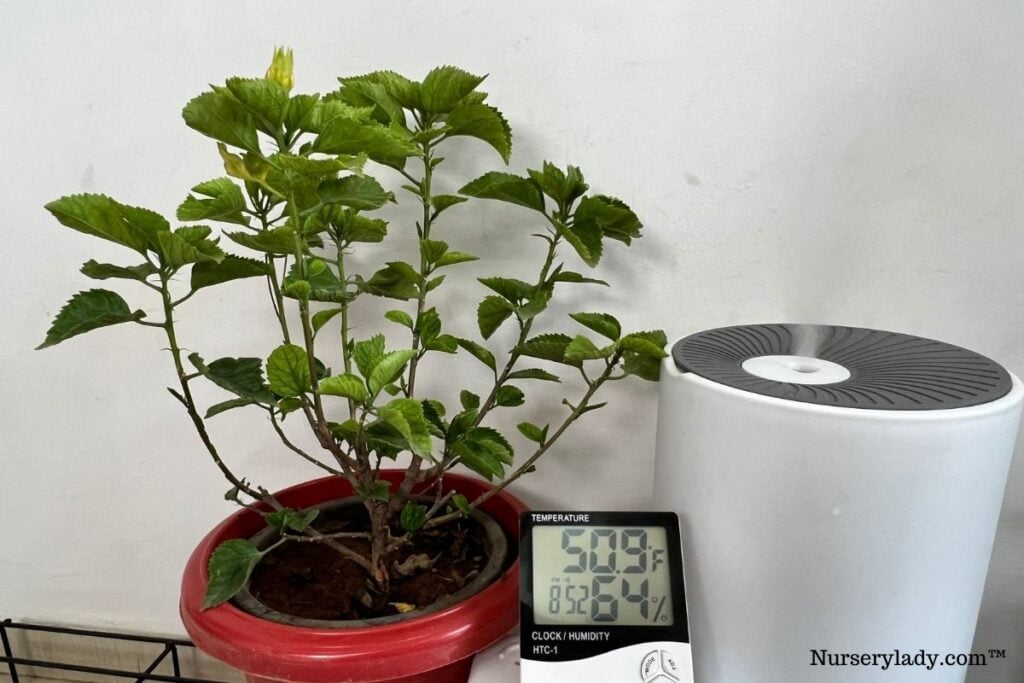
One major reason could be that Hibiscus is not getting its ideal blooming conditions.
Being tropical plants, they will need a warm temperature and enough sunlight for blooming.
Suppose your garden cannot provide the plant with adequate sunlight, humidity, and warmth.
In that case, your plant is not going to have any blooms.
Watering is reduced in winters. But it should be increased once the temperature is warm.
If you do not increase watering, the soil will remain dry.
Hibiscus soil’s moisture level should be consistent.
Dry soil can affect blooming.
Also read: Why Is My Hibiscus Plant Not Growing? (Causes+How To Fix)
Lack of nutrition
Hibiscus plants are heavy feeders.
Without enough nutrition, the plant will not bloom.
Besides, they need fertilization as a booster to wake up from dormancy when the winter ends.
If your plant lacks nutrition and you don’t fertilize them well, it will not have the energy to produce any flowers.
Your plant will be fine, but there will be no flowers.
Also read: What Is A Good Fertilizer For Hibiscus Plants? (Ideal Ratio+Best Pick)
Wrong pruning time
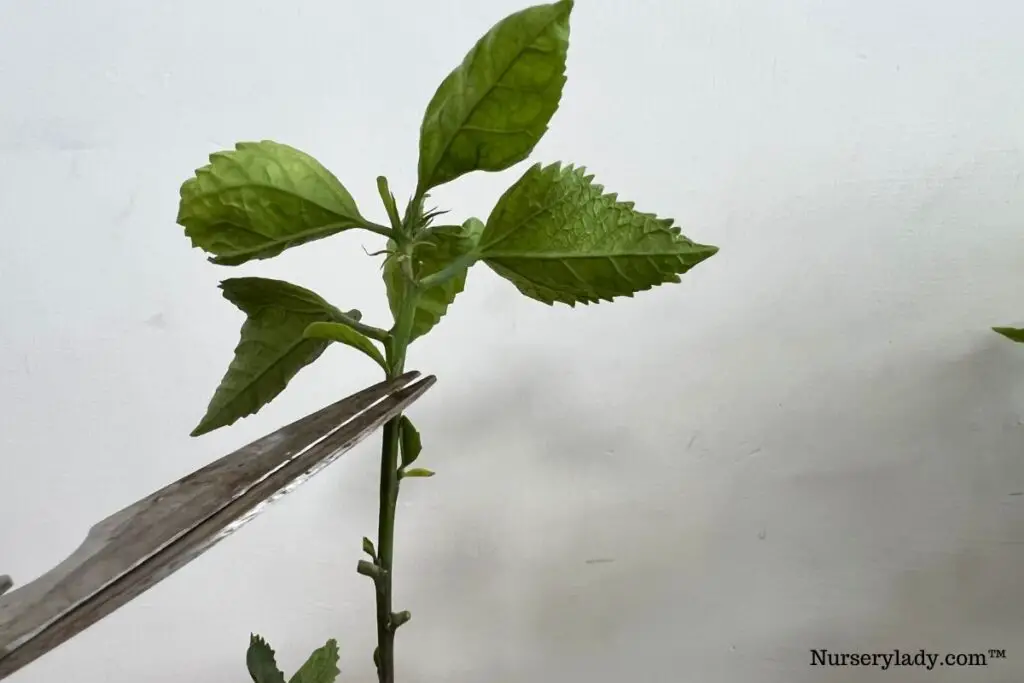
Spring and summer is not the right time for pruning.
At this time, only pinching is required to encourage stem growth at the tips for new blooms.
Heavy pruning during the growing month affects flowering.
Even if the plant flowers, it will be in the fall.
Since winter is arriving, you cannot enjoy the flowers for a very long time.
Soon, the blooms will wilt and fall off.
Also read: How To Prune Hibiscus? (A Step-By-Step Guide)
How can you encourage the Hibiscus plants to come back every year?
If you want your Hardy and Tropical Hibiscus varieties to come back every year, first ensure their growing conditions.
Only then will they be back in your garden each year.
Let’s know how to encourage Hibiscus to come back.
Find the right planting location.
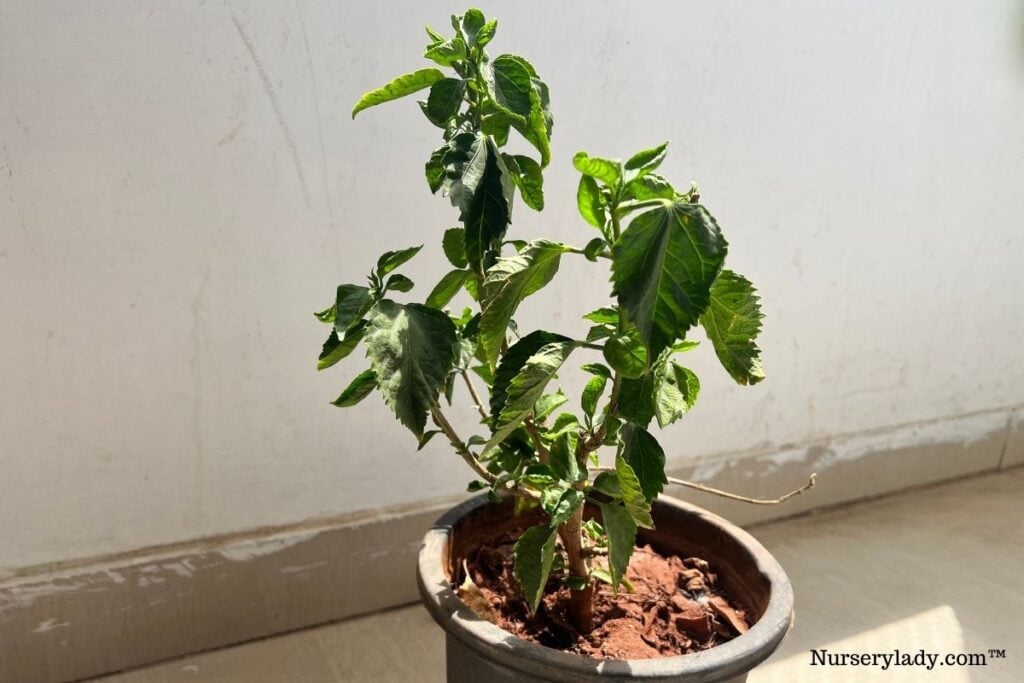
For bringing Hibiscus back each year, make sure they receive 6 to 8 hours of sunlight per day.
It is very important in the winters as sunlight can keep the plant warm.
If you belong to zones 4-8, find the sunniest spot in your garden.
Since these zones are colder, Hibiscus will need the full sun to remain warm throughout the year.
If you are from zone 9-12, find a spot that receives some shade, especially in the afternoon.
As these zones are warmer, summers are too heated. If your Hibiscus remains under the full sun, it will receive a sunburn.
Check that the soil is well-drained, well-retained, and fertile.
If not, add perlite and sand to improve drainage. Add compost to improve retention and fertility.
Also read: Where To Keep Hibiscus Plants? (Ideal Spot+Tips)
Choose the right variety depending on the zones.
If you live in the colder zones, consider growing Hardy Hibiscus varieties.
Since they are the true perennials, they will come back every year.
If you want to grow Tropical Hibiscus plants, grow them indoors.
They will stay in a controlled environment indoors and come back year after year.
For growing Tropical Hibiscus plants outdoors, grow them as annuals.
They won’t be back after facing the harsh winter.
So, stop wasting your time by treating them as perennials.
If you live in the warmer zones, you can treat both varieties as perennials.
Overwinter Hibiscus
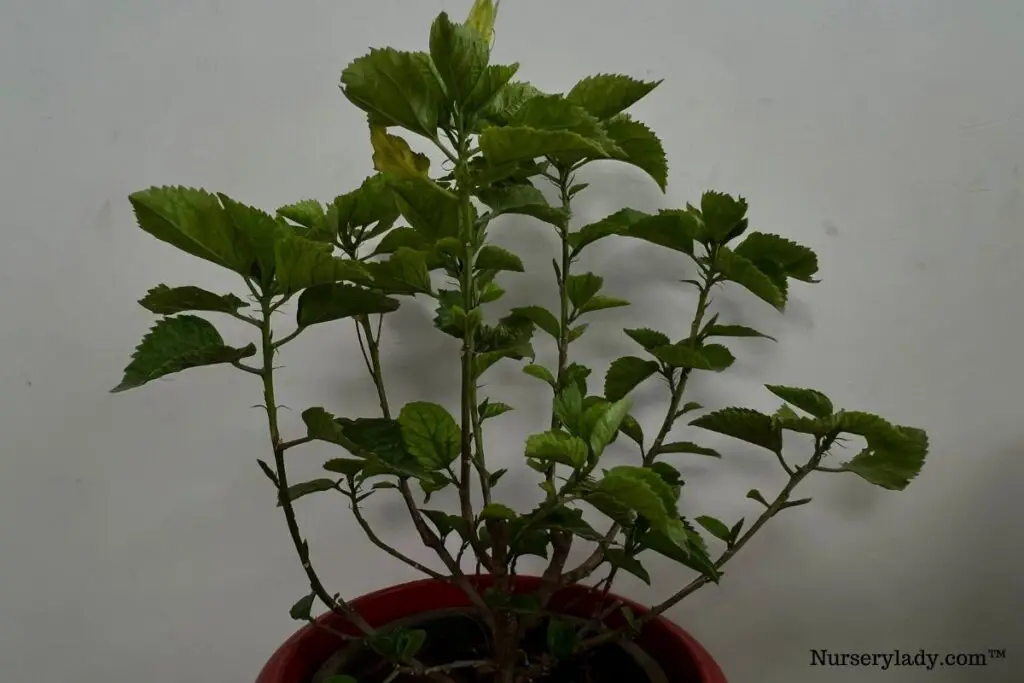
Overwinter your Hibiscus plant to help them return.
Add a thick layer of mulch at the plant base and cover the plant with frost cloth in the evening.
In the morning, let it have full sun for sufficient warmth.
Add some Christmas lights inside the cloth to maintain a warm temperature.
Take the Tropical Hibiscus indoors if the winter is too cold and maintain a warm temperature.
Use heat mats to keep them warm.
Keep them near the sunniest window for sufficient sunlight.
If Tropical Hibiscus varieties are in the ground, protect them with mulch and frost cloth.
Overwintering will encourage your plant to return every year.
Prune during the right time
Either prune at the end of the growing season or during the early spring.
Pruning keeps the plant tidy and stimulates more stem re-growth.
The more stems your plant will grow, the more blooms your Hibiscus will produce.
Soil’s moisture should be consistent.
Increase the watering frequency after the winter ends to maintain the soil’s moisture.
Don’t overwater it.
Always check that the top 1-2 inches of the soil are dry before watering.
Soil can also affect watering.
A fast-draining soil doesn’t hold the moisture and slow-draining soil retains it for a long time.
To avoid this and support the right consistency, use well-drained loamy soil.
To improve drainage, add ingredients like perlite or sand.
For retention and fertility, add compost.
Avoid using clayey or sandy soil.
Fertilize your Hibiscus plant
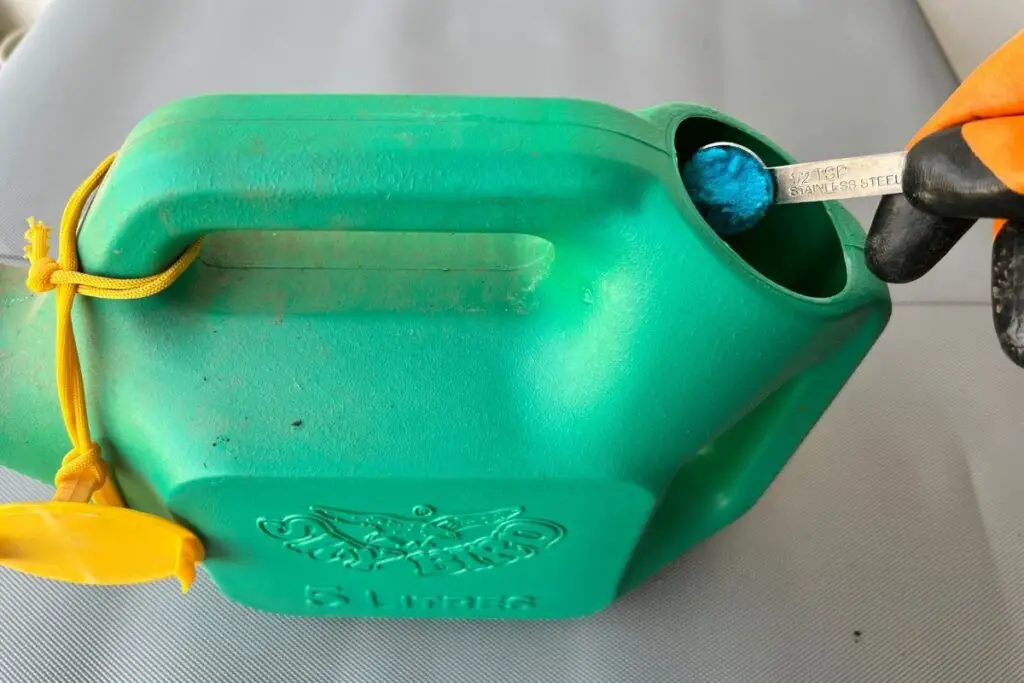
Don’t forget to fertilize Hibiscus plants, especially when they come out of dormancy after winter.
Use a fertilizer with an NPK value of 17-5-24.
Remember that the fertilizer should have average nitrogen, low phosphorus, high potassium, and other minerals like calcium, iron, manganese, copper, etc.
Never use bloom boosters for Hibiscus because it contains high phosphorus.
It can block the plant from absorbing the other nutrients and cause nutrient deficiency.
Protect again pests and diseases
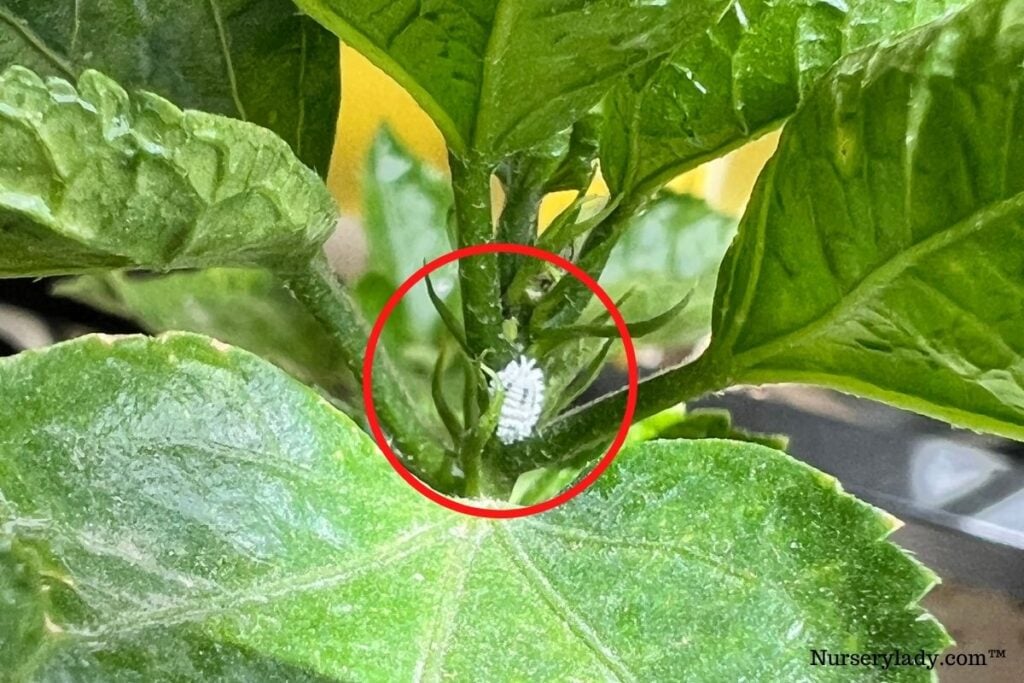
Bugs like mealybugs, aphids, thrips, scales, spider mites, beetles, etc., are the common bugs of the Hibiscus plant.
So, you should take steps to eliminate them.
Neem oil can discourage these pests.
If you have it in your home, spray them over the infected areas as soon as possible to avoid spreading.
It also works for fungal diseases.
For natural treatment, release natural predators like lacewings and ladybugs.
Insecticidal soaps and rubbing alcohol will also deter them.
For treating diseases, remove the affected parts the moment you spot them.
You can also use neem oil to prevent spreading.
Spray some fungicide on the infected areas to help the plant fight diseases.
You can even try baking soda as a natural fungicide to treat fungal diseases.
Also read: How Do I Get Rid Of Bugs On My Hibiscus? (Common Bugs+Fix)
Final thoughts
Hibiscus plants are perennials that will come year after year only if they receive their ideal environmental conditions.
Though Hardy Hibiscus will come back in any zones, Tropical Hibiscus will grow as perennials only if they are grown in the warmer zones. Otherwise, grow them as annuals and replant them the next year.
To encourage the plant to come back every year and bloom, give them enough sunlight, water, and fertilizer, use ideal soil and prune at the right time. Avoid stressing them with any unfavorable conditions.
Reference: Wikipedia, ASPCA, Louisiana State University Agricultural Center, American Society for Horticultural Science, Tropical Hibiscus by Texas A&M University, Sciencedirect.
